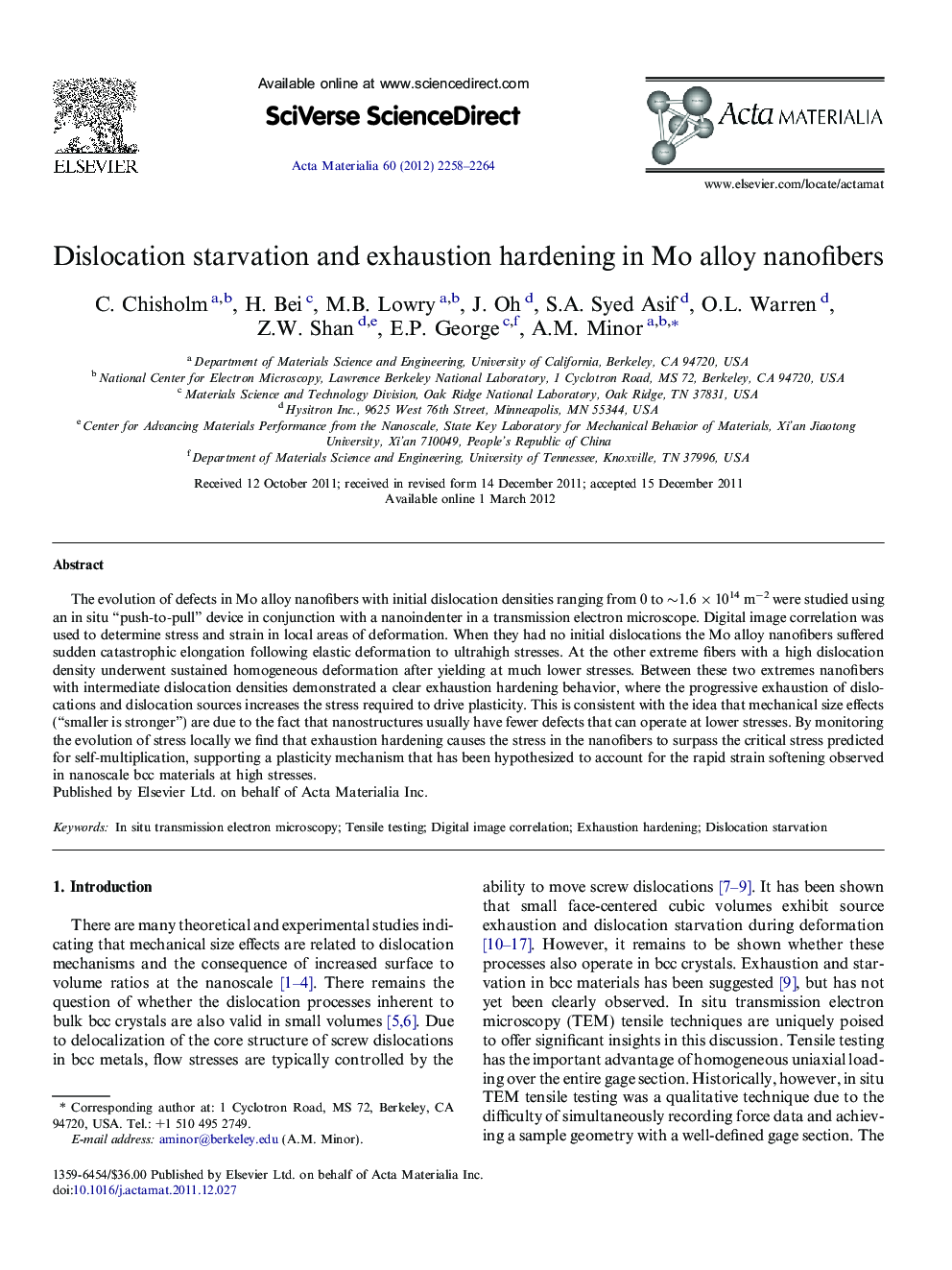| Article ID | Journal | Published Year | Pages | File Type |
|---|---|---|---|---|
| 10620473 | Acta Materialia | 2012 | 7 Pages |
Abstract
The evolution of defects in Mo alloy nanofibers with initial dislocation densities ranging from 0 to â¼1.6Â ÃÂ 1014Â mâ2 were studied using an in situ “push-to-pull” device in conjunction with a nanoindenter in a transmission electron microscope. Digital image correlation was used to determine stress and strain in local areas of deformation. When they had no initial dislocations the Mo alloy nanofibers suffered sudden catastrophic elongation following elastic deformation to ultrahigh stresses. At the other extreme fibers with a high dislocation density underwent sustained homogeneous deformation after yielding at much lower stresses. Between these two extremes nanofibers with intermediate dislocation densities demonstrated a clear exhaustion hardening behavior, where the progressive exhaustion of dislocations and dislocation sources increases the stress required to drive plasticity. This is consistent with the idea that mechanical size effects (“smaller is stronger”) are due to the fact that nanostructures usually have fewer defects that can operate at lower stresses. By monitoring the evolution of stress locally we find that exhaustion hardening causes the stress in the nanofibers to surpass the critical stress predicted for self-multiplication, supporting a plasticity mechanism that has been hypothesized to account for the rapid strain softening observed in nanoscale bcc materials at high stresses.
Keywords
Related Topics
Physical Sciences and Engineering
Materials Science
Ceramics and Composites
Authors
C. Chisholm, H. Bei, M.B. Lowry, J. Oh, S.A. Syed Asif, O.L. Warren, Z.W. Shan, E.P. George, A.M. Minor,
